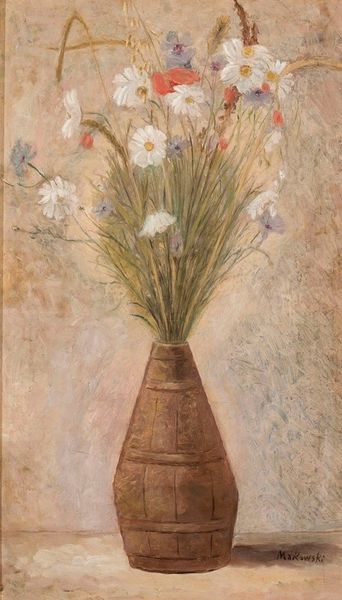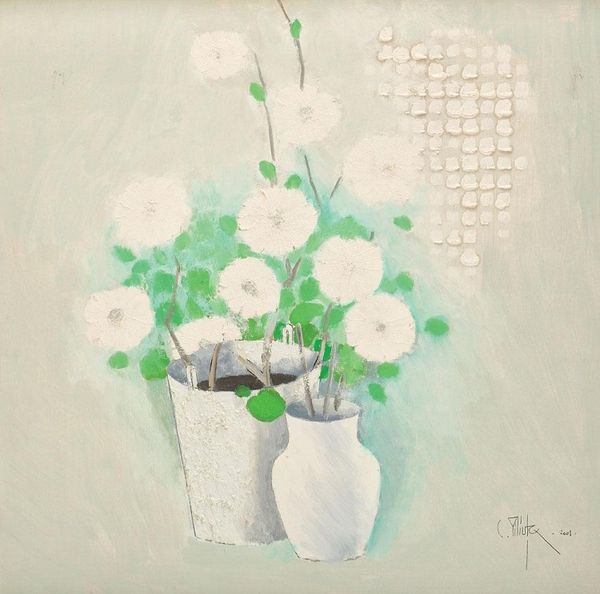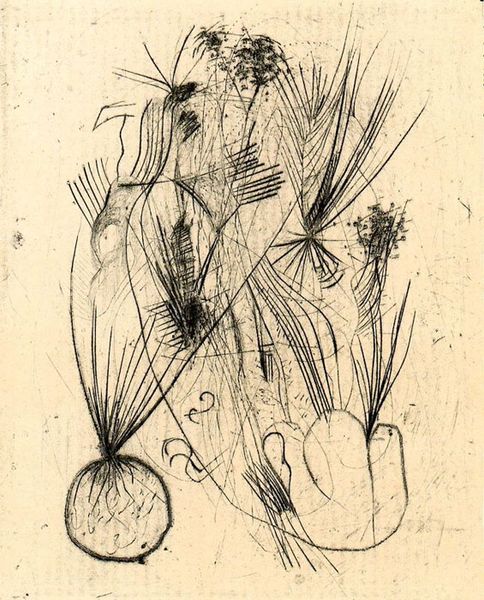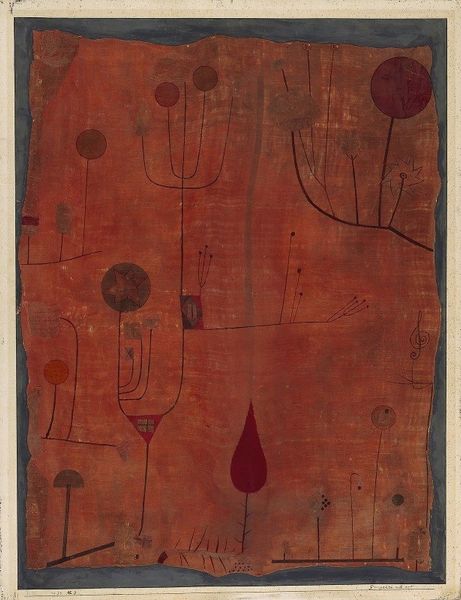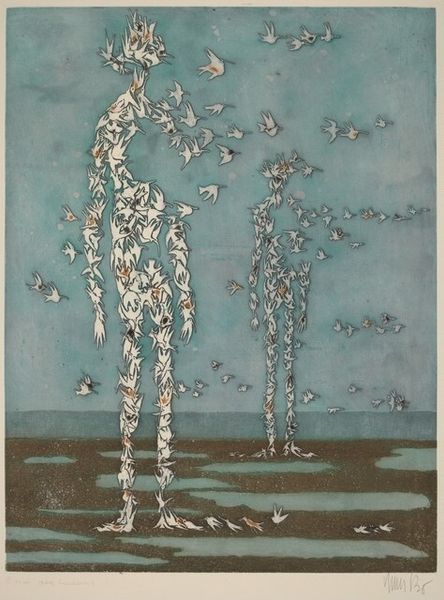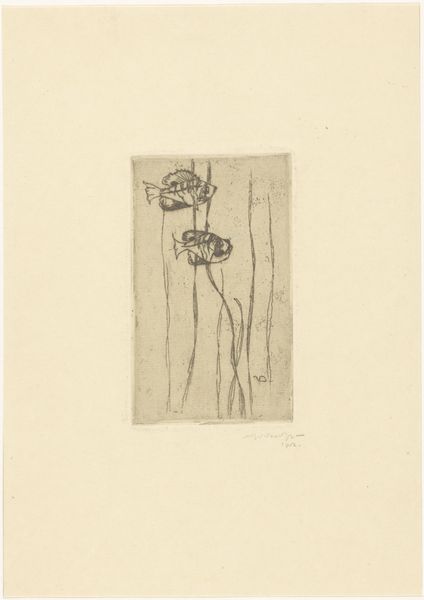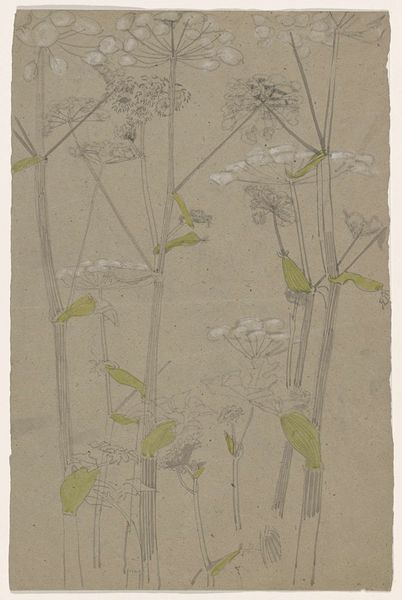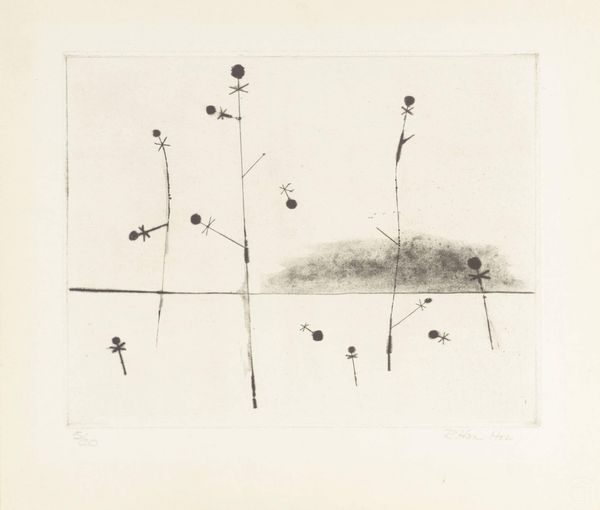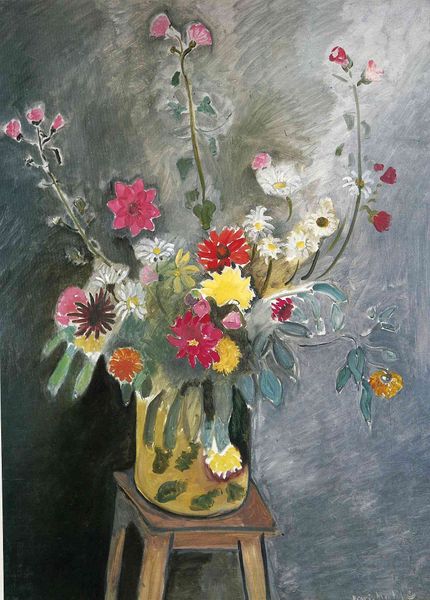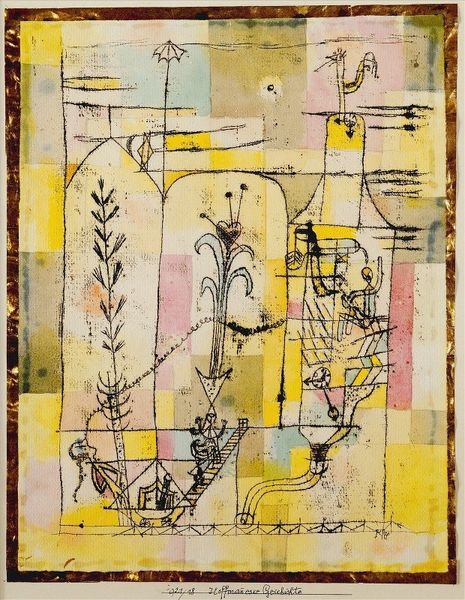
Copyright: Morris Graves,Fair Use
Curator: Here we have Morris Graves' "Bouquet for Mary Lea," created in 1957 using watercolor and colored pencil on paper. Editor: My first impression is one of gentle fragility. The delicate lines and muted palette create a very quiet, almost melancholic atmosphere. Curator: I'm struck by how Graves manipulates such humble materials to evoke such sensitivity. The visible texture of the paper itself, and the way the pigments settle, become intrinsic to the work’s feeling of intimacy and transience. It is of his later period during which he would divide his time in both Ireland and America, as his health worsened and the pressure to exhibit constantly took its tole, he started incorporating simple floral objects around the houses in both countries to feel closer to nature without having to venture outside. Editor: Precisely! Notice how the composition draws the eye inexorably upwards from the weighty base of the vase towards the floating heads of the daisies. This ascension imbues the work with a hopeful dynamism that alleviates any lingering sadness, transforming something as mundane as wilting house-flowers into an almost spiritual revelation. Curator: Considering its dedication to "Mary Lea," one could explore this artwork in relation to gendered labor. Flowers are frequently domestic adornments but, in this instance, we have an artist giving what he makes from what they can be transformed to be more than ornamentation as a tribute to what they bring to the household, while challenging conventional artistic production processes. Editor: It is through an understanding of its elements – the considered asymmetry, the contrasting translucence of the vase versus the opaque daisy heads that its meaning emerges so eloquently. It transcends merely capturing visual likeness by suggesting the inherent poignancy within ordinary experience. Curator: I concur, understanding both the making of the drawing, alongside its internal, visual structure grants a richer awareness of this still life; a window onto understanding how the artist engaged with production and craft itself, and life, from outside pressures that made it impossible for him to leave his house. Editor: In closing, 'Bouquet for Mary Lea' serves not merely as a still-life but as an enduring meditation on how elemental forms may hold immense evocative force. Curator: And that force echoes between object, dedication, and execution; blurring labor and art within a bouquet and for those familiar with the time's pressure on Graves; for that gesture alone, it gives us a glimpse of life itself.
Comments
No comments
Be the first to comment and join the conversation on the ultimate creative platform.

